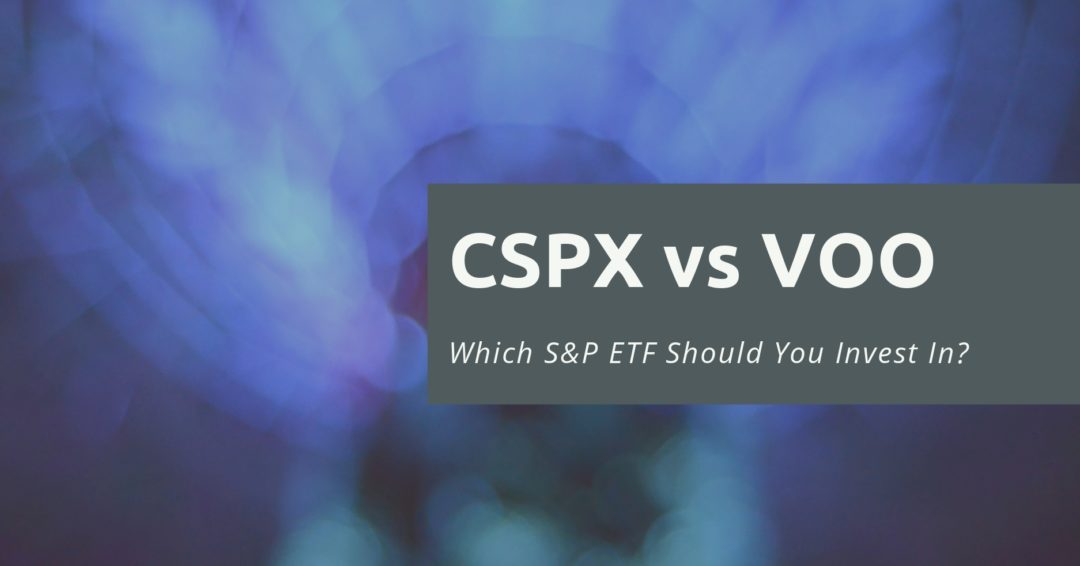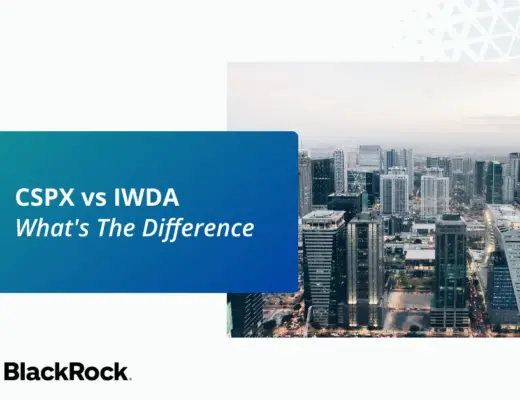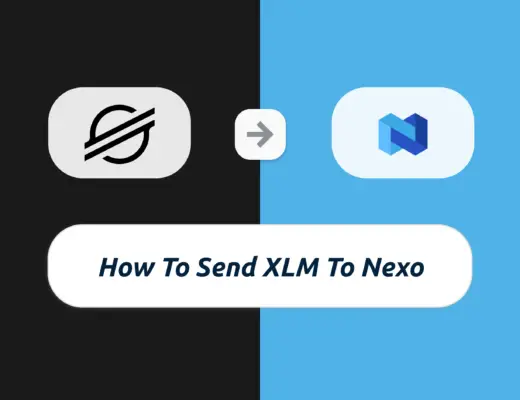Last updated on June 6th, 2021
There are many different S&P 500 ETFs for you to choose from.
So how exactly does the UCITS ETF (CSPX) differ from the US-listed VOO?
Contents
The difference between CSPX and VOO
CSPX is listed on the London Stock Exchange while VOO is listed on the NYSE. While they both track the same S&P 500 index, they differ mainly in terms of their expense ratio, dividend withholding tax and dividend distributions.
Here’s an in-depth comparison between these 2 ETFs:
Index tracked
Both ETFs track the S&P 500 index.
The S&P 500 is a stock market index that measures the performance of 500 large companies listed in the US.
Source: Wikipedia
As such, they should have almost the same performance in the stock market.
This is because both funds will have the same holdings in the same proportion.
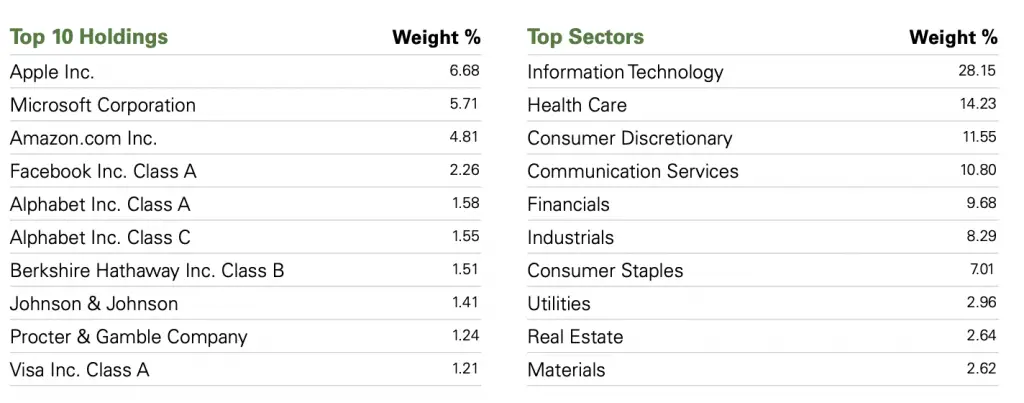
You can find out more about investing with the S&P 500 in Singapore with my guide.
The fund managers are different
CSPX is managed by iShares while VOO is managed by Vanguard.
CSPX was started in May 2010, while VOO started in July 2010. Even though CSPX was started 2 months earlier, VOO has a much larger assets under management (AUM).
| CSPX | VOO | |
|---|---|---|
| AUM | 44,481 million | 177,931 million |
They are listed on different exchanges
CSPX is listed on the London Stock Exchange (LSE), while VOO is listed on the NYSE. This does have certain implications on how you can buy these ETFs.
Both have the same minimum unit number of 1
The minimum units that you can purchase on either the NYSE or LSE is 1. Compared to the SGX which has a minimum lot size of 10 units, this makes it really accessible for you to purchase either ETF.
Not all brokers allow you to trade on both exchanges
Some brokers do not allow you to trade on the London Stock Exchange. In contrast, the NYSE is being offered by many brokers.
| Broker | LSE | NYSE |
|---|---|---|
| FSMOne | ✕ | ✓ |
| Interactive Brokers | ✓ | ✓ |
| Saxo Markets | ✓ | ✓ |
| Standard Chartered | ✓ | ✓ |
| Maybank Kim Eng | ✓ | ✓ |
| KGI Securities | ✓ | ✓ |
| OCBC Securities | ✓ | ✓ |
| Tiger Brokers | ✕ | ✓ |
| POEMS | ✓ | ✓ |
| TD Ameritrade | ✕ | ✓ |
| DBS Vickers | ✕ | ✓ |
To invest in the LSE, you may need to find a specific broker to do so. You can view my guide to see what are the best ways to buy LSE ETFs from Singapore.
You can also view my comparison between Tiger Brokers and FSMOne to see which broker is better for you.
Commissions charged may be different
When you are trading in different exchanges, you may incur different costs. For example, here are some of the commissions when you trade in both markets:
| Broker | US | LSE |
|---|---|---|
| Interactive Brokers | 1% of trade value Minimum USD 0.35 | 0.05% * trade value Minimum GBP 1 |
| OCBC Securities | 0.3% of trade value Minimum USD20 | 0.7% of trade value Minimum GBP55 |
You can also consider Tiger Brokers which offers you a minimum of USD1.99/trade.
Interactive Brokers’ commissions may seem attractive. However, they will charge you a custodian fee of $10 per month if your total amount is below $10k!
As such, you should try to find the lowest brokerage fees so that they won’t eat into your returns!
Unit Price
The unit price of each ETF is the price you’ll need to pay for 1 unit. Both CSPX and VOO have rather similar unit prices.
| CSPX | VOO | |
|---|---|---|
| Estimated Unit Prices | $380 USD | $350 USD |
As such, the unit price would not make much of a difference. If you are looking for a S&P 500 ETF that has a lower unit price, you can consider VUSD instead.
Dividend withholding taxes
CPSX is domiciled in Ireland while VOO is domiciled in the US. You will incur a lower dividend withholding tax when you invest in Irish-domiciled ETFs.
| CSPX | VOO | |
|---|---|---|
| Dividend Withholding Tax | 15% | 30% |
If you are a non-resident alien to the US, you will incur the 30% dividend withholding tax.
However there is a tax treaty between Ireland and US. Any dividends issued from US stocks will only incur a 15% withholding tax.
2 layers of taxes
For any ETF, the fund manager buys the stocks based on the index they are tracking. The dividends that they distribute are collected from the stocks in their fund.
As such, there are 2 layers where you may incur some taxes:
- From stock to ETF
- From ETF to you, the investor
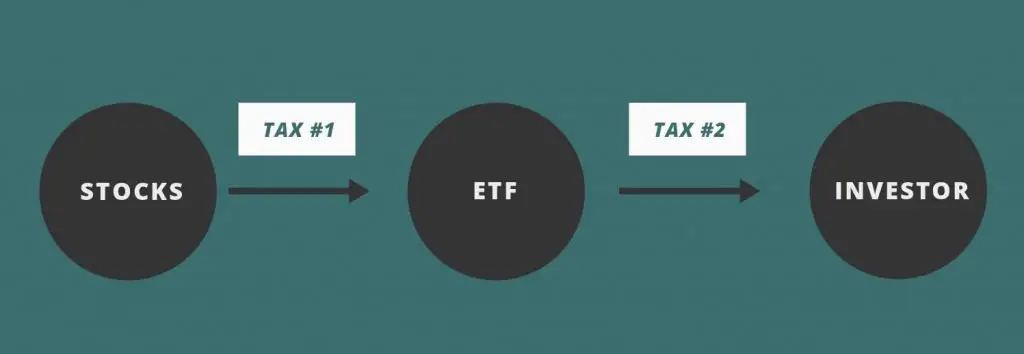
CSPX incurs the tax on the first layer
For CSPX, the dividends from the US stocks are distributed to an Irish-domiciled ETF. As such, the 15% withholding tax applies on the first layer.

VOO incurs the tax on the second layer
When the stock distributes its dividend to the ETF, no tax is incurred. This is because it is from a US stock to a US-domiciled ETF.
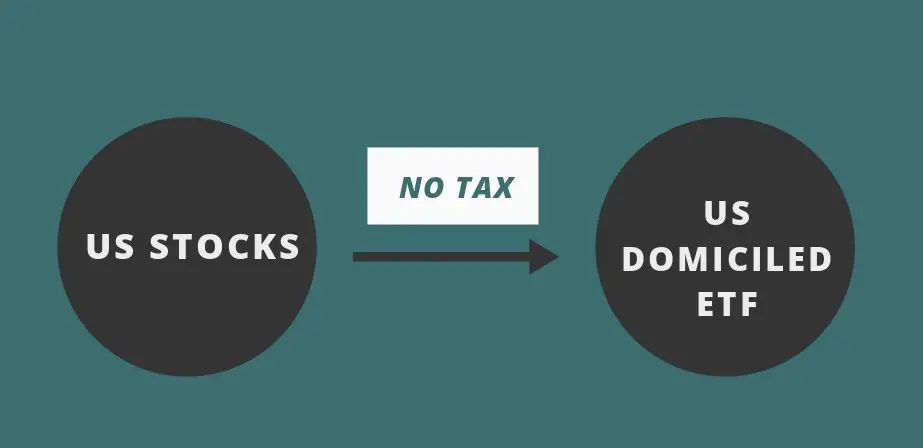
However when the dividends are distributed to you, they will incur the 30% tax. This is because you are a non-resident alien.

If you wish to track your dividends with taxes accounted for, you can consider trying out StocksCafe’s platform.
Dividends
The way that CSPX and VOO handle their dividends are rather different.
CSPX automatically reinvests your dividends
CSPX is an accumulating ETF. This means that they will not distribute your dividends to you. Instead, they will reinvest the dividends they receive into the same stocks in the index.
If you are looking to reinvest your dividends from the start, CSPX may be a better choice.
This is because you do not need to incur any additional transaction fees when the ETF reinvests your dividends for you.
VOO is a distributing ETF
Meanwhile, VOO is a distributing ETF. This means that any dividends received by the fund manager will be distributed to you.
Vanguard will distribute the dividends to you on a quarterly basis.
This is great if you want to receive some income when you invest in this fund!
You can read my comparison between accumulating and distributing ETFs to see how they are different.
Estate tax
Another significant cost of investing in US-related assets is the estate tax. This can go from 18% all the way to 26%!
An estate tax is a tax on the right for you to transfer your assets after you have passed on.
Since VOO is domiciled in the US, it will be included in your taxable estate.
However, CSPX is domiciled in Ireland. Even though they own US stocks, you will not incur this estate tax!
If you wish to leave behind a legacy for your loved ones, CSPX may be the more ideal ETF to invest in.
Expense ratio
On top of the trading commissions you’ll need to pay the broker, you will have to pay an expense ratio to the fund manager as well.
This expense ratio is usually deducted at the end of each year.
Here are the expense ratios for these 2 funds:
| CSPX | VOO | |
|---|---|---|
| Expense Ratio | 0.07% | 0.03% |
The expense ratio for CSPX is more than twice that of VOO’s. While this difference may seem small, it will affect you in the long run!
If you are a US investor, VOO will be a much better choice due to the lower fees you’ll need to pay.
Liquidity
If you are looking to actively trade using these ETFs, you may want to look at their liquidity. One of the indicators you may want to look at is the ETF’s trading volume.
| CSPX | VOO | |
|---|---|---|
| Average Trading Volume | 132,000 | 3,152,000 |
VOO has a much higher trading volume than CSPX due to it being listed on the NYSE.
If you are a frequent trader, VOO will be a better ETF to invest in. This is because you will be able to buy or sell the ETF at your intended price.
Verdict
Here is the complete breakdown between CSPX and VOO:
| CSPX | VOO | |
|---|---|---|
| Fund Manager | iShares | Vanguard |
| AUM | 44,481 million | 177,931 million |
| Exchange | LSE | NYSE |
| Estimated Unit Prices | $380 USD | $350 USD |
| Dividend Withholding Tax | 15% | 30% |
| Dividend Distribution | Accumulating | Distributing |
| Estate Tax | No | Yes |
| Expense Ratio | 0.07% | 0.03% |
| Average Trading Volume | 132,000 | 3,152,000 |
So which ETF should you choose?
Choose CSPX if you want to reinvest your dividends
If you intend to invest in the S&P 500 for the long term, CSPX will be the better choice. Your dividends are automatically reinvested.
This allows you to compound your money to larger extent!
Moreover, you can save on transaction fees that you would need to pay if you were to reinvest the dividends by yourself.
CSPX is more tax-efficient for non-US investors
If you are a non-US investor, CSPX seems to be the more tax-efficient ETF to invest in.
You will receive a much lower dividend withholding tax and not incur any estate tax. However, the expense ratio is slightly higher!
As such, you’ll need to consider the total costs of investing in an ETF, rather than just the taxes that you’ll incur.
Choose VOO if you want an ETF with a higher liquidity and lower expense ratio
If you are a US investor, VOO is a no-brainer for you. However, the dividend withholding tax may deter you if you’re a non-US investor.
What you get in return for the higher taxes is a higher trading volume and lower expense ratio. The higher trading volume is more applicable to you if you’re a frequent trader.
Moreover, most brokers may provide a cheaper trading commission when trading on US exchanges compared to the LSE. As such, you may actually be saving more when you invest with VOO!
The only thing that you’ll need to really take note of is your estate tax. This becomes very significant when your assets in US become larger than $60k!
Conclusion
Both ETFs track the same index, so their performances should be very similar. The ETF that you choose depends on a few things:
- The taxes that you wish to incur
- The exchange that you want to trade in
- The expense ratio you’re willing to pay

Do you like the content on this blog?
To receive the latest updates from my blog and personal finance in general, you can follow me on my Telegram channels (Personal Finance or Crypto) and Facebook.
Are you passionate about personal finance and want to earn some flexible income?

